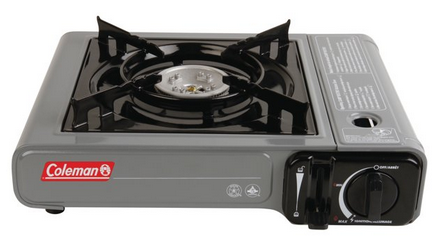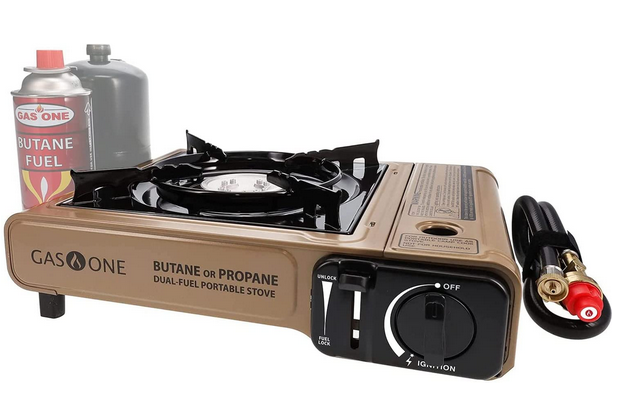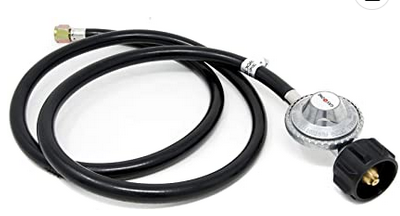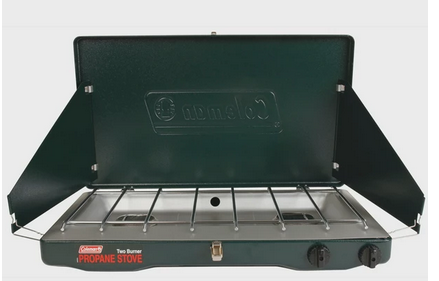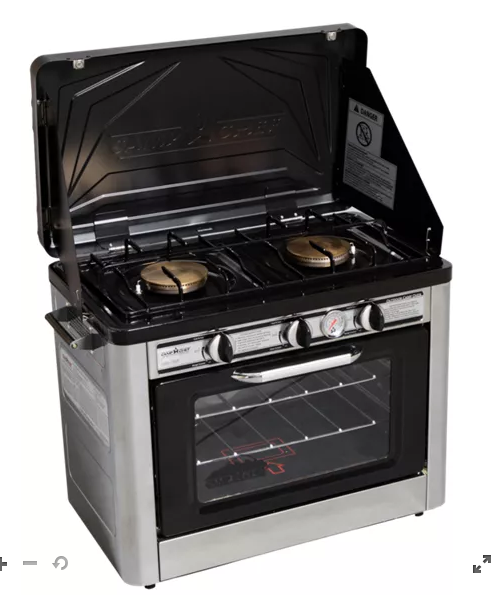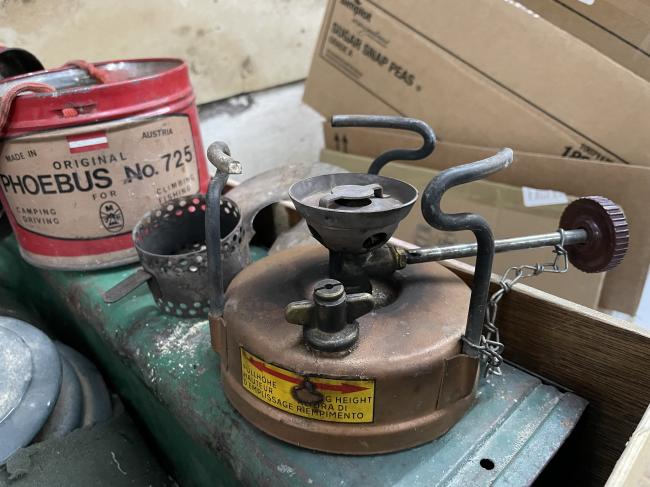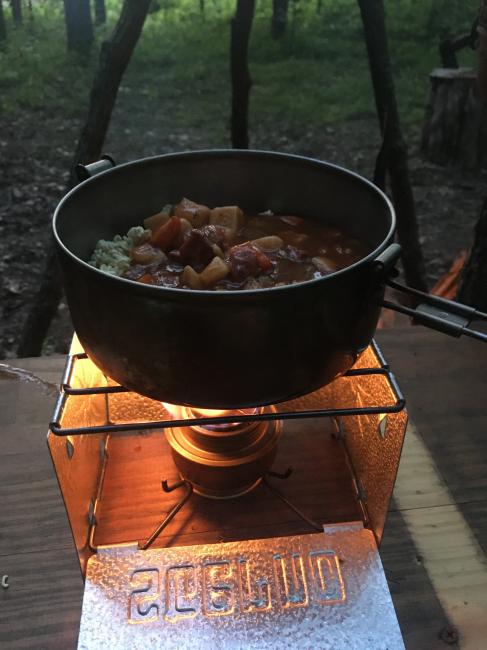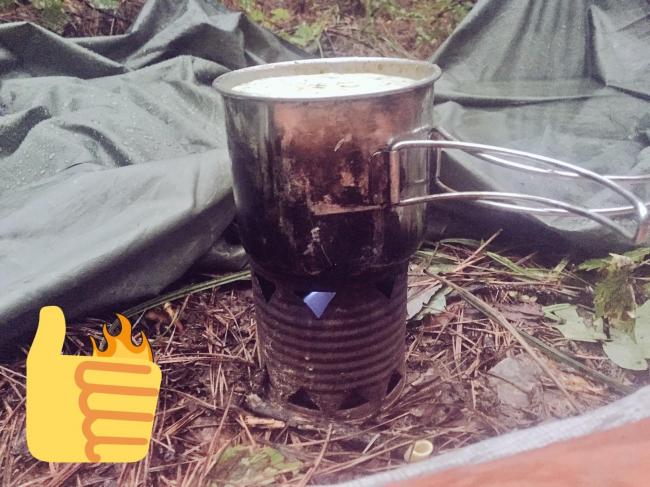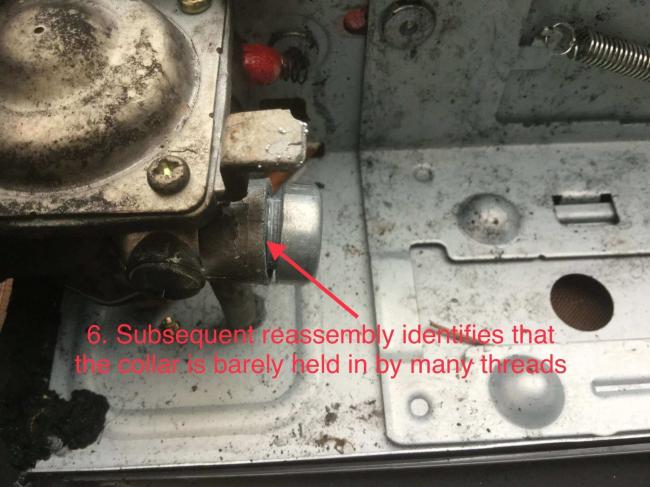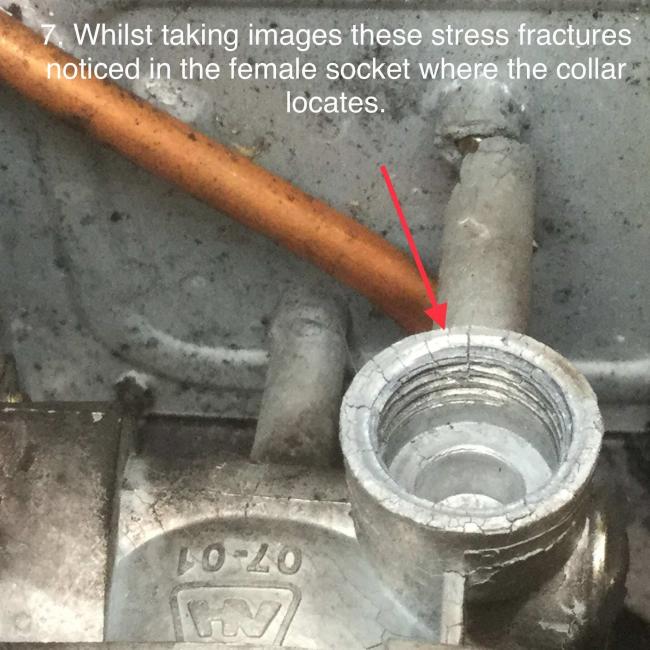What is the best camp stove for an emergency power outage or camping?
I would like to get a small portable camp stove that I can use if the power is out or if I want to go camping. It’s not going to be an every day user, so keeping the cost of the stove and fuel as low as possible will allow me to buy it sooner.
I could go as cheaply as $20 and get a butane stove that runs off little butane canisters.
But for $13 more, I can get a similar one that will work on those same butane canisters or the small propane tanks. I like this idea because I believe it would be cheaper in the long run to use propane, but if I wanted to just go camping I could use butane and take the smaller and lighter tank.
And for $17, I can get an adapter hose that will allow me to use one of those large BBQ propane tanks that should be even cheaper. I wouldn’t bring this camping but if the power is out for days, it would be comforting to have a ton of fuel available.
For $48, there is the classic Coleman propane camp stove that will give me two burners, has a wind guard, but only runs on propane and is larger and heavier if I were to take it camping.
Or I can go all out and buy this camp oven and stove combo for $330
Do you all have any other recommendations or experience with any of these?
-
Comments (37)
-
Colorado Jones - May 31, 2022
The ubiquitous green two-burner Coleman stove is a tried-and-true choice. A couple of years ago, the ~40 year old Coleman that my parents bought for camping when I was a kid finally clunked out, and replacing it with the exact same thing was a no-brainer. I recently bought a converter to use it with a 20lb propane tank, which is cheaper than the 1lb disposable propane bottles and, frankly, a more substantive fuel supply for a long-term emergency as opposed to a week long camping trip. If you’re looking to do some serious cooking, there are better but pricier options out there. But for emergency preparedness or simple camp grub, the Coleman does just fine. For outdoor cooking, you definitely want something with a windguard (or need to plan to DIY something along those lines) and, as for fuel, propane canisters (or refills in the case of the 20lb tank) are generally much easier to find than the butane canisters pictured above.
-
My name is Megan - June 1, 2022
That windguard built into the Coleman is nice. If I go with another type stove, I’ll have to create a folding shield like that.
Thank you for your suggestions and input.
-
Denial - January 22, 2024
I’m a big fan of Dweller camping pellet stoves for both emergencies and camping. I’ve got a Coleman Classic that’s been super reliable for years. It’s easy to use, heats up quickly, and the fuel canisters are easy to find. Just make sure you use it in a well-ventilated area, especially indoors.
-
-
-
hikermor - May 31, 2022
Consider backpacking stoves, often very light and versatile, burnng alcohol, fuel tabs or isobutane canisters. Burner heads for the canisters can be had for about $35.
With any stove, be mindful of CO accumulation, inside especially
-
My name is Megan - June 1, 2022
I am leaning towards the dual fuel stove. Everyone seems to have a Coleman on here, but it is propane only. Butane seems to be the safer fuel to burn inside (like during a power outage in the winter, with the window cracked of course), and then propane when I can cook outdoors.
I was looking around a bit more after posting this and saw that butane doesn’t like the cold at all. So that will be a no-go for cooking outdoors with during the winter.
-
Colorado Jones - June 1, 2022
How cold do you expect to be cooking outdoors, Megan?
Butane generally works down to freezing and, with an inverted canister stove, isobutane can be used down into the single digits. Propane, in theory, can be used well into sub-zero temps.
Here and here are some tips for cold weather stove use. Unless you plan on doing hardcore winter camping, butane probably isn’t going to be a problem to use if that’s what you have. And if you end up going with a dual- or multi-fuel stove, you should be fine. Indeed, having the flexibility to switch back and forth between different fuels is probably a good thing.
For indoor cooking, you may want to invest in a battery powered C02 detector, just in case.
-
-
Shaun - June 1, 2022
Hi Megan,
Coleman stoves can be very convenient and efficient for camping or an emergency. You can get them powered by butane/propane or white gas/gasoline.
I have used a gasoline fueled Coleman stove for years and they are inexpensive to run if you keep the parts clean.
I have a propane Blackstone grill on the deck and would use it in an emergency like a blackout but it may not be my first choice, depending on what’s going on.
If I had to be mobile, those little butane stoves might be very useful. If I had to walk home from work I could cover 40 miles in 2 days with cold food so I don’t plan on a stove to get back.
My most likely scenario is a power outage though and during an electric outage I want to conserve my propane for important uses first.
For example, I will use a #10 can rocket stove (search for plans online) to make coffee or boil water in the morning and use my thermoses. I can cook most food on the rocket stove too. All I need is some easily found and cut branches of various sizes to get it burning hot. I have enough cut wood to fuel it almost forever. Of course I can use the firewood for a campfire if needed but the rocket stove is much more efficient with the wood.
All I need is wood and a sharp camp axe – which is very useful for solving other problems.
This allows me to keep my propane tanks free and unused for a space heater if needed. I could also lend or barter it to someone if necessary.
Anyway, it’s always about options and when the chips are down I prefer to rely on low-tech tools first because their use requires me to learn a skill (no matter how simple) and leaves me with more options and flexibility.
Low tech should be our first option because it’s so easy to adapt to our circumstances or changing requirements. Skills first, products last.
-
Greg P - June 1, 2022
I have two of the old school Coleman stoves that I inherited. They are both over 40 years old and still working fine. The old ones use the Coleman fuel (white gas) & can also used unleaded gasoline. For my two cents worth, I feel that unleaded fuel will be way easier to procure in case of SHTF vs propane/butane.
-
My name is Megan - June 1, 2022
I was looking at those and thought they were interesting. How does it smell and/or make your food taste? I’m a bit weary of cooking with the stuff that makes my car vroom.
-
Greg P - June 1, 2022
I have only used the Coleman fuel to this point. I notice the smell just a bit – of course I’m cooking outside. However, the odor doesn’t affect the flavor of my food. I also have a Coleman coffee maker that I use on it – gotta have my caffeine! (LOL) No noticeable flavor impact in that either.
-
hikermor - June 1, 2022
I’ve cooked many meeals wiith all the fuels mentioned in this thread and never noticed ny taste imparted to the chow. After all, the fuels re burning, which alters their chemistry….
-
-
Pops - June 1, 2022
I have a Coleman I bought new in 1974. With a propane conversion (just a propane fitting and valve you stick in instead of sticking in the tank and valve) you have some options. Get repair parts, I once cut a valve leather from a belt when I was camping. Not sure about the new ones, I doubt they are leather.
Also a Phoebus I bought about the same time for backpacking. If you think operating a Coleman is exciting, this little dude has no pressure pump, the way you make pressure is to intentionally spill some fuel into the basin on top of the tank and set it on fire. It burns anything, including tents, sleeves, down jackets, you name it!
I also have kero heater that would run on anything less explosive and I’ve rigged up a couple expedient solar cookers for practice as well.
Id think a Portable induction cooktop and a few PV panels is the best bet besides a solar unit, because no matter the fuel, they will eventually run out. The one linked is 120vAC so you would need an inverter and battery. I’ve looked for 48v DC units (that is my system voltage) but could only find them overseas wholesale on Alibaba, or Amazon.India, etc.
-
Pops - June 5, 2022
Found several youtubes of induction cookers on solar. These guys both have neat setups. Not sure why so many vids on this subject are from Aussies but they do have some neat rigs!
-
Gideon ParkerStaff - June 6, 2022
An induction cook top is a great suggestion to these other mentioned methods of cooking. That second video goes well over some of the pros such as not being affected at all by the wind, no fumes, and greener for the environment. Plus as long as the sun is shining you can have a way to cook.
The one downside I see to induction cooking though is that it requires a lot of wattage. The one you link to Pops uses 200-1800W and that is a lot of power. It would require a $1000+ solar generator and that doesn’t even include the solar panels. For an off-grid or long term survival situation this definitely is the way to go because you are right that only so much propane can be stored, but for short term use, the compactness and low initial cost of something like a butane stove and how much energy it packs is quite impressive.
-
Pops - June 6, 2022
It does require a decent draw, Gideon, 177A @12V said the one guy (with other stuff running presumably). So you need a decent inverter and sufficient wiring. But remember, induction it is both very efficient (much more than resistance heat) and very quick. Upshot being, it doesn’t need to run long.
1800W for 2 minutes is 3600 Watt/Minutes to boil a cup of water. A 12v 100AH battery holds 1,200 watt/ hours or 72,000 watt minutes of juice. So maybe 5% of a $100-150 Walmart deep cycle.
And yes, it isn’t the cheapest solution, but the tradeoff is sustainability. In fact, after the initial investment, free power for years and years and years on a daily basis with never another drop of fuel is doable—power for refrigeration and lighting and electronics. Anyone whose rough camped for a week (ostensibly to have fun) can likely attest to the relief knob twist cooking like those blokes down under demonstrated would be.
Rather than a “solar generator” I’d suggest searching for an actual DIY solar system in kit form. Here is a page of such. Not an endorsement, just a sample to peruse.
The panels are cheaper than ever nowadays too. I paid 50¢ per watt for 330w Tier 1 Trinas. The panel tech has improved so much that entire PV farms are already replacing old panels, that are then resold for a song. Lithium based batteries are 1/3 the weight of lead and last 3-5 thousand cycles and right now the prices are great (not sure if they’ll get even cheaper or just get ungettable). Aims is a good mfg of inverters I believe and they have a “no frills” 2500w inverter on their site for $225!
From what I can tell, the “solar generators” are idiot boxes of a sort, all-in-one so foolproof to an extent, but not expandable, nor repairable on a component level.
The advantage of a kit is flexibility. Within limits one can mix and match panels, batteries (again within limits) add chargers to utilize more/more powerful panels, use one or more a/c mains chargers to make a backup battery, add inverters as required. Start wherever and go from there, learning as you go. In extremis, perhaps cobble together additional capacity from found parts, car alternator windmill or water wheel, scavenged battery, etc.
If the idea is going all bare chest Rambo this is not the solution, can’t get cheaper than a hand drill to make fire. But if a truly self sufficient —and sustainable— personal infrastructure is the idea the possibilities right now are more affordable than any time ever.
Cheers my friend!
-
-
Joker - June 1, 2022
Ignore the first two, similar stoves have had issues with the quality of castings allowing gas to leak while the Coleman classic has been around since the 1970’s and is proven technology. I have no experience of the fourth “combination oven/burner stove, an oven would be really useful but it also looks bulky and heavy.
-
M. E.Contributor - June 1, 2022
I love my Solo Stove. It can burn wood, coal, twigs, and I even bought the alcohol burner in case I want to use that. For me in an emergency there’s a 99.9% chance I can find twigs and a much smaller chance that I can get a steady supply of liquid fuels. I’ve used it several times during emergencies and it’s great (I do recommend using it at least once before an emergency, since when you desperately need coffee is not the best time to figure it out, even though it is easy)
You can even make a similar one out of a #10 can – just google “how to make your own camp stove”. Since I’m rather accident prone I decided the ER visit for stitches needed from trying to make my own would override the cost difference from buying the already-made Solo!
-
My name is Megan - June 3, 2022
Thank you for your recommendations. I do have an endless supply of twigs around my yard unfortunately, so having a wood burning stove in the long term would be smart and is something I’ll have to get after a gas/liquid powered one.
I wanted a gas powered stove that I can quickly light up during a power outage that usually will last less than 24 hours. It will be easy, fast, and clean to use compared to using wood.
The alcohol burner you linked to is similar to the one Alicia linked to as well down below. There might be something to that if both of you like it.
-
-
Alicia - June 3, 2022
Depending on how cheap and what you want to cook, there are plenty of alcohol stove options as well. There are the basic cat can (an empty tuna can or catfood can filled with alcohol and lit), to soda can burners that make a burner type of ‘bloom’ to more durable ones to purchase. They can run on 90% rubbling alcohol which is in any drug store, but do best on alcohol fuel. These tend to do best at boiling water since there is no flame adjustment. Any type camp stove performs better with a windscreen so you’d need to make one for any stove that doesn’t have it already – folded aluminum foil or a cut up disposable roasting pan has worked for me. If you’re home, you can lean baking pans around it.
-
My name is Megan - June 3, 2022
I hadn’t considered liquid fuel stoves but do like how small and compact that is. Looking at some Amazon picture reviews for that one you linked to, you can get a real nice windbreak or even just use a can with some holes poked into it.
-
Alicia - June 4, 2022
Absolutely. The only limitation is your imagination and creativity. It’s really about your goals, plans and budget. Consider the cookware you want to use on it and the amount of heat control you would need. Since our propane BBQ grill has a side burner with a flame controller, that is the option for normal at-home power outages – where I’m cooking normal dinners using my heavier kitchen cookware. I can store enough extra propane to get us through a week or so. I would probably consider a CampChef or Coleman double burner if we didn’t have that. I tend to lean more towards backpacking vs. car camping which translates into light and small vs kitchen burner style stoves. The backpacking stoves tend to need lighter camping cookware (like what is in your photos above).
-
My name is Megan - June 5, 2022
That is another good point… What kind of cookware will I use. For the normal power outage, I will probably be using my home cookset but when camping I might want to go with something lighter. Lots to think about.
Thank you all again for the great ideas. It has driven me down many rabbit holes of research and I hope to share my findings with everyone here in the future.
-
-
LBV - June 7, 2022
Rather funny, I woke up this morning to a powercut. I have two emergency stoves stoves, a small foldable stove with tablets and a small alcohol burner. I chose to use the alcohol burner (from China). It was actually the first time I have used it. I used methylated spirits as the fuel. I chose this as I was at home, inside and felt it was the cleaner option. Also the fuel is currently easy to replace.
It cooked my breakfast a lot quicker than I thought it would, and later I heated water for two cups of coffee (unfortunately not espresso).
The one thing I was not prepared for was the flame being next to invisible.
-
My name is Megan - June 7, 2022
Preps to the rescue!
How did that fuel smell while it was burning? From a few YouTube videos I’ve watched on alcohol stoves the consensus on them is that denatured alcohol (methylated spirits made up of ethanol and methanol) or yellow HEET(methanol) are the best fuel sources. These two seem to be the cheapest per ounce, cleanest burning, and quickest to boil water.
What I haven’t seen in any video though is how they smell and the fumes that are given off.
-
LBV - June 7, 2022
Very minor smell, but I did have the lounge doors open so my dog can run around the yard. The flame went surprisingly high when I took my pot off the stove. I was using my standard kitchen stainless steel pot, not camping pot. I would also recommend a thermometer as I found I only needed to heat my water to 80°C not boiling for a coffee.
-
-
Black Club - June 11, 2022
Another option, not that its available yet, but something to keep an eye on:
Battery powered stove/cup, that can be charged by a solar panel.
Won’t be cheap though.
A review by someone who could get hold of a demo one would be nice – hint hint
-
Gideon ParkerStaff - June 11, 2022
Its a cool concept and one that we saw at the Outdoor Retailer Summer expo last year.
-
My name is Megan - June 19, 2022
I like that concept and hope that it does well.
-
-
Bigwig - June 18, 2022
My preferred #10 can rocket stove videos:
-
My name is Megan - June 19, 2022
Now that is creative! One man’s trash is another man’s rocket stove. hehe
Have you made one of these before and how well do they work?
-
-
jasm21 - June 23, 2022
Hi All,
I already have a jetboil we use a lot when doing all dayers and get back to the car for a break. We’ll be traveling for a while this coming spring/summer. Month or 2 on the road in a subaru outback. Will get a small trailer that carries a storage box. And get a roof box as well. What stove should I get for those who really know stoves? That 2 burner Coleman everyone has for about 50$? Or go for something bigger/better/lighter?
-
My name is Megan - June 23, 2022
I’m definitely not the expert as I’m the one who created this topic asking for advice on stoves in the first place, but I would like to pitch in my thoughts based off of what I’ve learned.
The first question I would ask is if you need a two burner or one burner. So plan out some of your meals or look at your current cooking and see if you need the bigger two burner.
And then, even with your trailer and roof carrier, you may not have the most room to carry a bunch of stuff. I would go with small and light. You can either do the butane only stove (first picture up above) and it’s small compact fuel canisters, or the dual fuel option (second picture) where you can run it off the little propane tanks as well.
-
Joker - March 29, 2024
I really can’t stress how bad those little briefcase stoves are that take the gas cans that look like aerosols. I know there are a lot of different ones on the market but they’re cheaply made and suffer from poor manufacturing and horrendous quality metal castings that have been known to crack and leak gas…not something you want if you’re using it in your home. The images I’m showing you are from a stove that actually caught fire and could not be turned off.
-
Joker - March 29, 2024
I really can’t stress how bad those little briefcase stoves are that take the gas cans that look like aerosols. I know there are a lot of different ones on the market but they’re cheaply made and suffer from poor manufacturing and horrendous quality metal castings that have been known to crack and leak gas…not something you want if you’re using it in your home. The images I’m showing you are from a stove that actually caught fire and could not be turned off.
-
-
Watchtower - March 29, 2024
I’ve had great luck from a Gas One single burner butane stove. No experience with their dual fuel model, but that’s a nice idea and to be able to connect to a 20 lb propane tank from a bbq is very useful in theory.
I’ve had no wear and tear issues from my Gas One stove, there are many copy cat brands out there so beware.
I also own a Bayou Classic propane cooker, which is a heavy duty single burner used for outdoors with large pots like for lobster boil etc, It connects to a 20 lb propane tank or larger.
Small alcohol/backpacking stoves are fine but for home emergency I prefer what I have, it’s more stable, can be placed on a deck, table top or tailgate. Plus I have a propane BBQ like most people.
Lastly, some cast iron cookware to be used over a campfire. Oh and microwaves and electric pressure cookers, can be used with a generator or portable power station.
-
underprepraccoon - April 19, 2024
I have one of the duel Fuel GasOne burners, it does run off one pound propane, and can run the larger 20 gallon cans, but we don’t feel comfortable using those. It’s nice having dual fuel that way because up until maybe a year ago, we couldn’t actually find the insertable butane mini cans. We have used propane before during a random power outage while we were making dinner. It really feels like a standard stove top during use.
I like alcohol stoves because they’re cheap and fun to make. Capillary hoop stoves, penny cans, fancy feast style stoves, open felt, there’s a lot of ways to make them. I have a fancy feast style stove in my travel bag, so if it gets stolen, I’m not out much money. I would like to get one of the backpacking style isobutane stoves, mostly for fun, but as mentioned in the thread, they aren’t always ideal for the extreme cold. Denatured alcohol is also useful for cleaning some things, I recently used it to removed thermal paste from some old computer cooling components.
I think at this point, you can really just pick your specifications and find something that’s reasonably close to your budget. There are plenty of reviews out there, but some stoves have been stopped being manufactured.
-
- Fun ways to teach kids outdoor/survival skills - 2 days ago
- News for the week of 2025-06-30 - 3 days ago
- News for the week of 2025-06-23 - 1 week ago
- News for the week of 2025-06-16 - 2 weeks ago
- News for the week of 2025-06-09 - 3 weeks ago
This forum is heavily moderated to keep things valuable to as many people as possible. Full community policies are here. The basics:
- 1. Be nice to each other.
- 2. Stay focused on prepping.
- 3. Avoid politics, religion, and other arguments.
- 4. No unfounded conspiracies, fake news, etc.
- 5. Debate ideas, not people.
